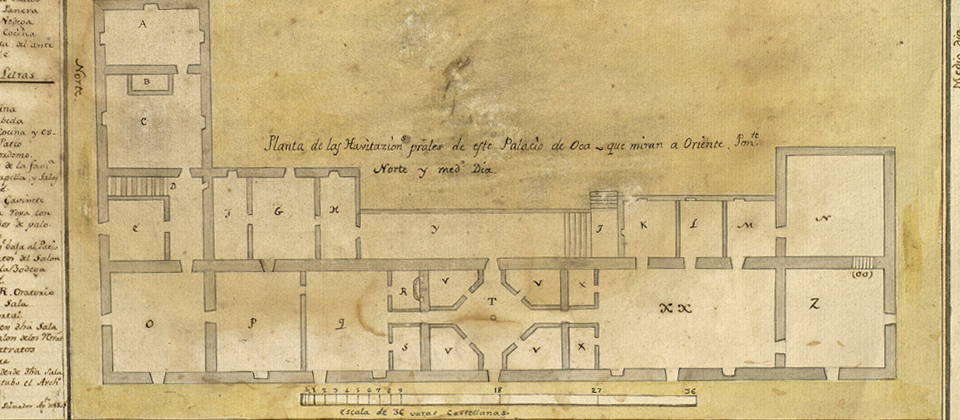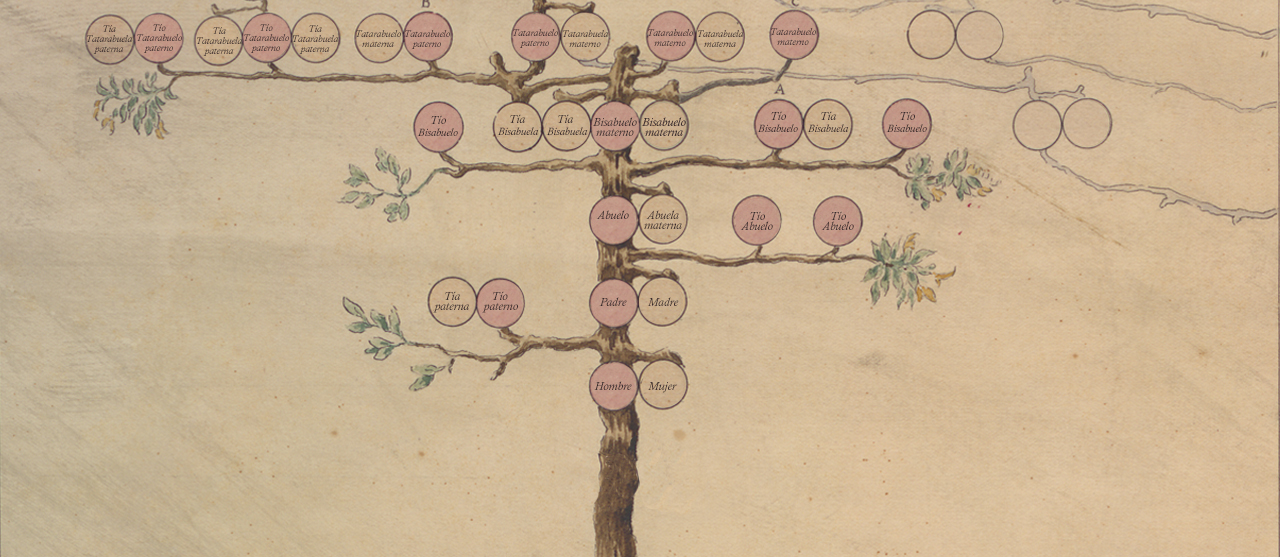The chapel of San Antonio de Padua
The chapel was built between 1731 and 1752 by the Dominican architect Fray Manuel de los Mártiresone of the representatives of the late Galician Baroque, author among others of the monumental façade of the monastery of San Martín Pinario in Santiago. This chapel replaced a primitive oratory that, at the end of the 16th century, María de Neira dedicated to Saint Anthony of Padua, an invocation that the new chapel maintains, presided over both on the main façade and on its main altarpiece by this Franciscan saint, an oratory that had been licensed to celebrate mass since 1714. On its façadeThe Saint Anthony of Padua in the niche of the second body, Santa Barbaracrowning it, and the coats of arms of their principalsFernando Gayoso de los Cobos and María Josefa de los Cobos Bolaño, the same as those on the ceiling of the Salón del Estrado, on both sides. The three altarpieces were contracted in 1750 with the master from Santiago de Compostela. Luis Parcero and sculptures by the famous Galician Baroque sculptor of Genoese descent, José Gambinoto whom all of them are attributed, except for the main statue of St Anthony of Padua, which some believe to be Italian and others Italian. José Ferreiro.
High Altarpiece
- In the first body; in the centre, Saint Anthony of Paduaon the right, Saint Anthony the Abbotdepicted, with the book, the staff and the pig, and to his left, Saint Teresa of JesusThe work of the Foundress of the Discalced Carmelites, represented by a pen and a book held in each hand, is said to have been inspired by the Holy Spirit, the dove that flies over her head;
- In the second body: on the right-hand side of the street, Saint Francis of AssisiThe founder of the Franciscan order, with a crucifix in his right hand and in his left hand, the founder of the Dominicans, Saint Dominic of GuzmanThe dog with a flaming torch in its mouth, the staff, the bible and the dog with a flaming torch in its mouth;
- In the attic: In the centre, a picture of the Immaculate ConceptionOn the right, a San Sebastian and to its left a San Roque.
Gospel side altarpiece
The attic medallion represents the St. James the Apostlebelow a crucified figure, and in the first body, in the centre, a Our Lady of Sorrows flanked by San Juan y Saint Mary Magdalene.
Epistle side altarpiece
The attic medallion represents to St. Andrew the Apostleunderneath Saint Ignatius of LoyolaThe first body, the founder of the Jesuits, is in the centre of the first body, Saint Raymond NonnatusThe oratory on the upper floor contains a reliquary with his bones, flanked by San José and the king San Fernando.
When the work was completed, a chaplaincy was founded, the patronage of which was reserved by the Count of Amarante for himself and his successors, and in 1795 he received a licence to celebrate mass open to the public.
Sepulchres
On both sides of the transept are the funerary sepulchres of Esteban de Junqueiras(collaborator of Archbishop Fonseca in the Galician civil war and rewarded for it by the Catholic Monarchs), his wife, Teresa Vázquez de Sotomayor and daughters who were originally in the convent of San Antonio in Santa María do Xobre (Puebla del Caramiñal, La Coruña). They were the founders of one of the entailed estates that became part of the Marquisate of Puebla de Parga and the tombs were transferred to the Oca chapel in 1929 by the Marquis of Camarasa, due to the ruin of the convent following the 19th century exclaustration.


